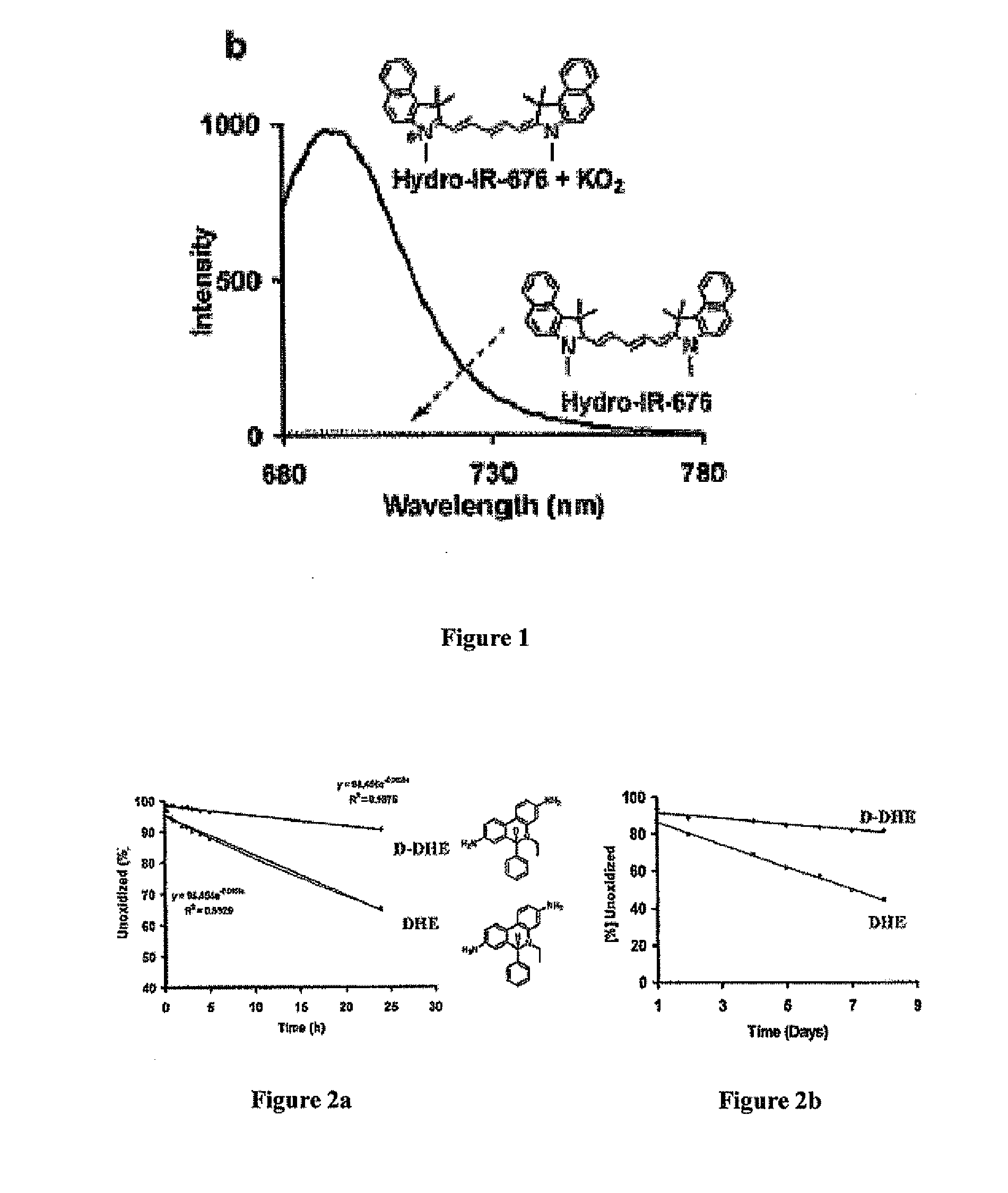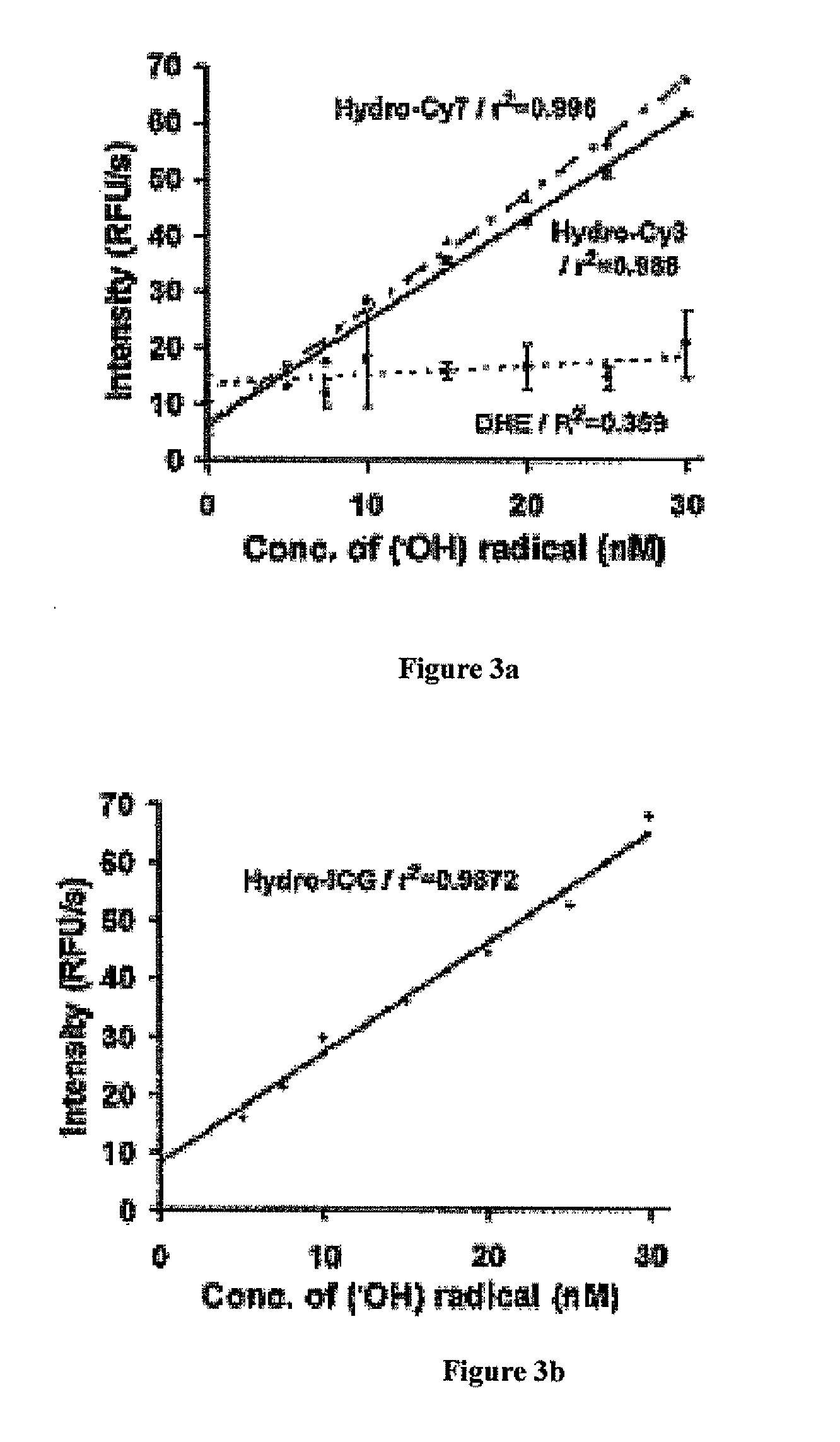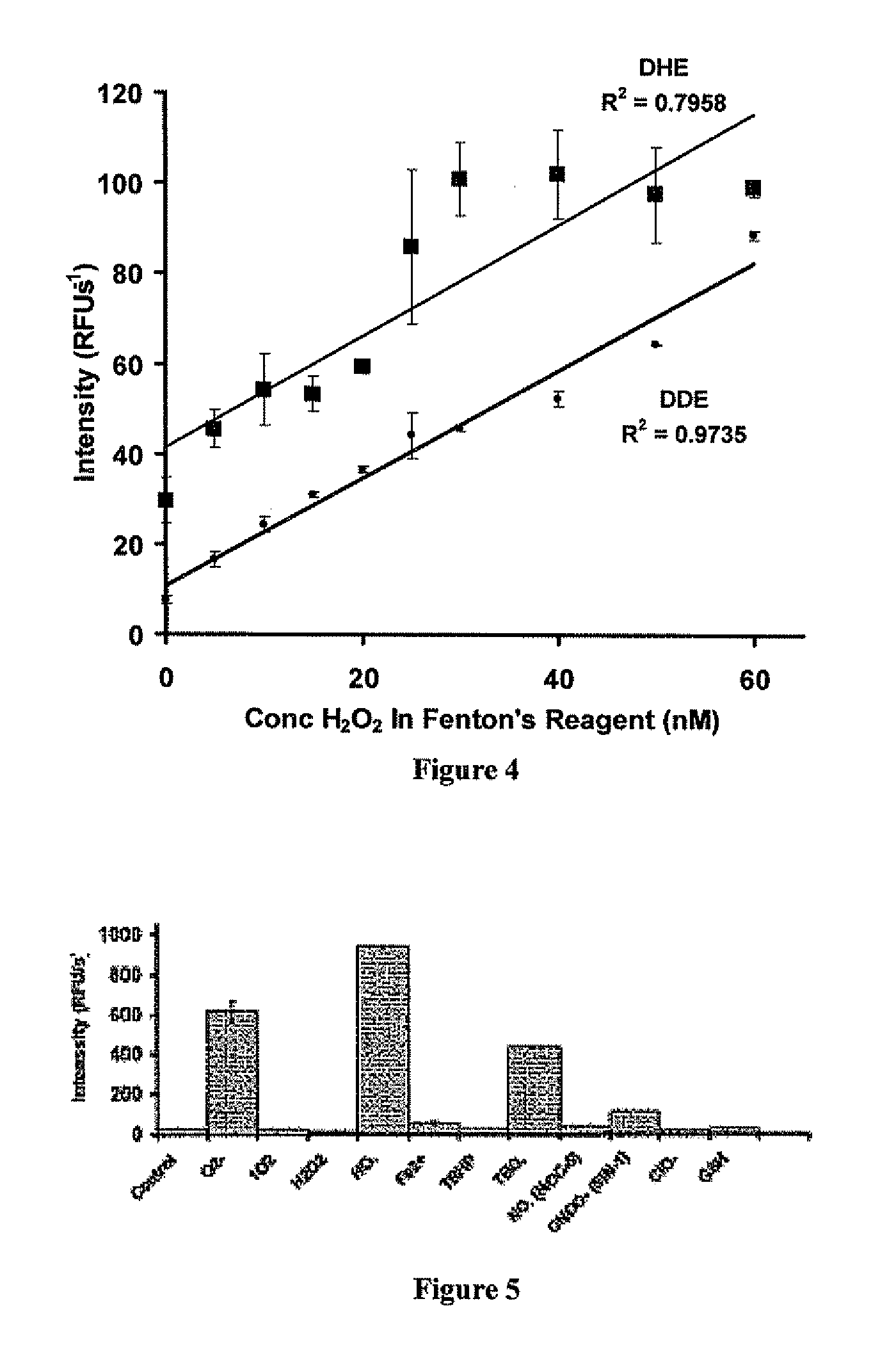Reduced dye probes for the detection of radical oxygen species
a dye probe and radical oxygen technology, applied in the field of dye probes to detect radical oxygen species, can solve the problems of substantial increase in fluorescence intensity, and achieve the effects of weak fluorescent, excellent stability to auto-oxidation, and significant increase in fluorescence quantum yield
- Summary
- Abstract
- Description
- Claims
- Application Information
AI Technical Summary
Benefits of technology
Problems solved by technology
Method used
Image
Examples
example 1
Representative Procedure for the Synthesis of Hydrocyanines
Cy3 (100 mg, 0.2 mmol) was dissolved in 5 ml of methanol. The mixture was placed in a 4-drum vial covered with aluminum foil. Sodium borohydride, NaBH4 (3 mg, 0.08 mmol in 0.5 ml methanol), was added dropwise to the purple Cy3 solution. After the addition of NaBH4, the mixture was stirred for 10 minutes, generating a colorless solution. The reaction mixture was stirred an additional 10 minutes before removing the solvent under reduced pressure. The resulting solid was dissolved in 10 ml of dichloromethane (CH2Cl2) and 5 ml water and vigorously shaken. The organic layer was extracted with additional dichloromethane (5 ml×2), dried over anhydrous sodium sulfate, and the solvent was removed under reduced pressure. The reduced dye was used without additional purification.
Reduced versions of Cy5, IR-676, Cy7, and ICG were prepared using the procedure described above, or a modified version thereof. The reduction of the imine was c...
example 2
Sensitivity of Reduced Dyes to Reactive Oxygen Species In Vitro
Hydroxide Radical
Hydroxide radicals were generated in situ by reacting hydrogen peroxide with Fe2+. Various quantities of hydrogen peroxide (H2O2) stock solutions were added to a solution of hydrocyanine in methanol to generate hydrogen peroxide concentrations from about 2 to about 30 nM. Aqueous Fe2+ (1 μM) was added to the reduced dye / H2O2 solution to generate a 200 nM concentration. The resulting solution was kept at ambient temperature for 5 minutes and the fluorescence intensity was measured (λex / λem) against a reagent blank (control solution containing only reagent) simultaneously.
Superoxide (O2−) was created by the enzymatic reaction of XA / XO (10 lm / 10 mU) at 25° C. for 5 min (XA=Xanthene, XO=Xanthene oxidase). XA / XO (10 lm / 10 mU) was added to buffered solutions of Hydro-Cy3 (10 mM) maintained in a 37° C. water bath. The fluorescence emission of each reaction mixture was measured at 5-min intervals again...
example 3
Specificity of Hydro-Cy7 to ROS
A 50 μm Hydro-Cy7 solution was prepared in phosphate buffered saline (PBS) containing 1% methanol. Various reactive oxygen species were added to the 50 μm Hydro-Cy7 solution, at an equimolar ratio to Hydro-Cy7, and the fluorescence intensity was recorded after incubating 5 minutes at 25° C. Superoxide (O2−) was added as solid KO2. Stock solutions of hydrogen peroxide, t-butyl hydrogen peroxide (TBHP), hypochlorite, 3-morpholinosydnonimine (SIN-1), glutathione (GSH), and 1,4-hydroquinone were prepared and added to the Hydro-Cy7 solution to generate a final concentration of 50 μM. 3-(aminopropyl)-1-hydroxy-3-isopropyl-2-oxo-1-triazene (NOC-5, 1 mM) was prepared as a 10 mM sodium hydroxide solution and added to the Hydro-Cy7 solution to generate a final concentration of 50 μM. The hydroxide and butoxy radicals were generated in situ by reacting hydrogen peroxide and t-butylperoxide with Fe2+. A 50 μM Hydro-Cy7 solution, in PBS, containing 500 μM Fe2+ was ...
PUM
| Property | Measurement | Unit |
|---|---|---|
| emission wavelengths | aaaaa | aaaaa |
| LogP | aaaaa | aaaaa |
| pH | aaaaa | aaaaa |
Abstract
Description
Claims
Application Information
 Login to View More
Login to View More - R&D
- Intellectual Property
- Life Sciences
- Materials
- Tech Scout
- Unparalleled Data Quality
- Higher Quality Content
- 60% Fewer Hallucinations
Browse by: Latest US Patents, China's latest patents, Technical Efficacy Thesaurus, Application Domain, Technology Topic, Popular Technical Reports.
© 2025 PatSnap. All rights reserved.Legal|Privacy policy|Modern Slavery Act Transparency Statement|Sitemap|About US| Contact US: help@patsnap.com



